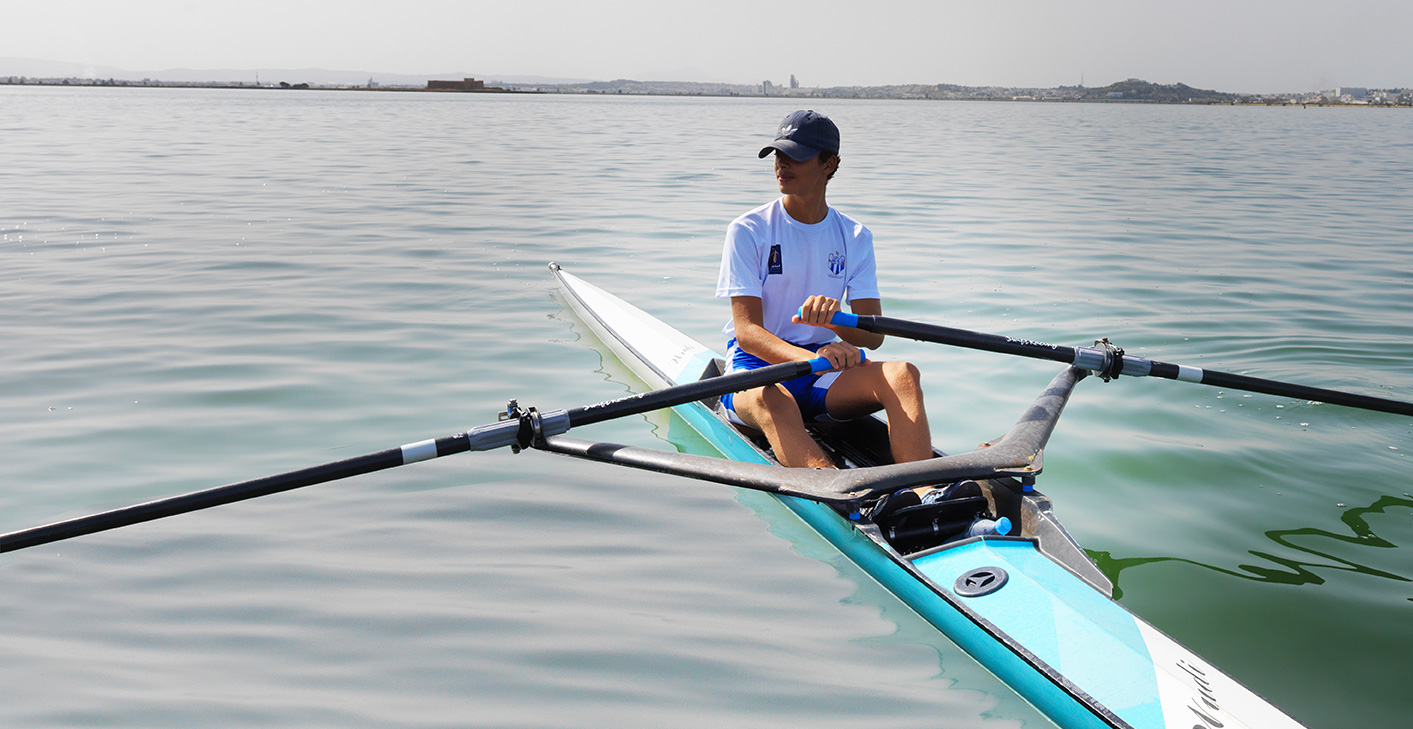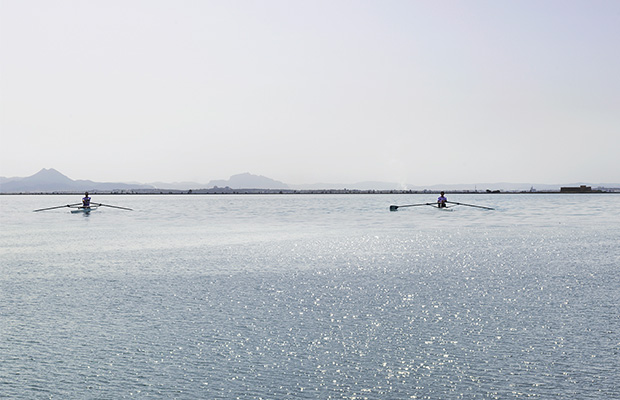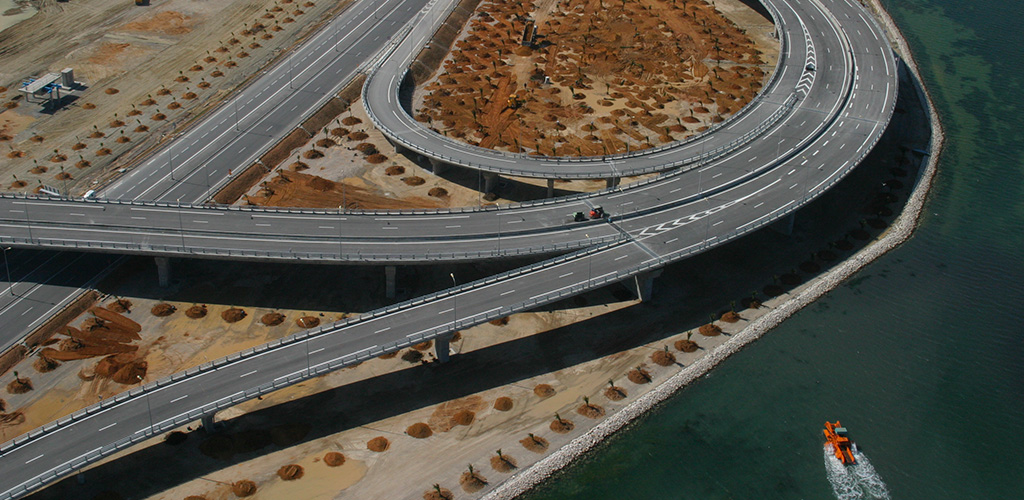Expertise
Sanitation and Restoration
The sanitation and restoration of the lake, made possible thanks to the government efforts to restructure Tunis City wastewater system and to ensure the interception of wastewater discharges, which created balance in the ecosystem. As a result, the urbanization of the lake shores is now perfectly integrated in the urban dynamics of Grand Tunis area.

The lake before Restoration
The Lake of Tunis, which appeared in the 16th century, has over time become a lagoon that served as a site for domestic and industrial waste from the city and its suburbs. Episodes of dystrophy (bad odors) were frequent causing the proliferation of green nitrophilous seaweed (Ulva) indicating heavy pollution and making the navigation nearly impossible in some areas of the Lake.
This process, which started at the beginning of the 20th Century up until 1981, was at the origin of the extinction of aquatic animals and plant species. This gave way to the proliferation of green nitrophilous algae indicative of pollution throughout the lake surface.
Restoration of the lake
The North Lake sanitation pattern was established on a mathematical hydraulic and ecological simulation model elaborated to come up with a system of water renewal and circulation that makes it gradually possible to stabilize river level and maintain satisfactory water quality in the lake.
This model constituted Al Buhaira Invest’s decision support system for its development projects. It estimates water speed, water exchange volume, the stay period in the lake as well as the variation in water level throughout the tidal cycles in the lake, making it hence possible to choose the ideal shoreline spots and depth.
Upon completion of the lake sanitation and restoration, Al Buhaira Invest endeavored to make ‘Les Berges du Lac’ area a high-quality and multipurpose urban fabric with high-performance networks.
Our focus in all works undertaken has always been quality services and experienced partners, which in return enabled us to deliver safe construction works.
The studies and works lasted over 4 years (1983 -1988) and required huge financial and human resources.
The sanitation and Restoration works undertaken in the North Lake and the backfilling of the shores made it possible to yield a total of 1,327 ha of real estate land.
Through its engineering structures, subdivisions, facilities development and road infrastructure, Al Buhaira Invest excels in quality management, high added value achievements and effective setup of a Public-Private Partnership (PPP) leading project.
Post-restoration state of the North Lake: Ecological upgrading
The vast restoration program of the Tunis North Lake was considered a great success, all the more so from a biological and ecological stance. The lagoon ecosystem recovered balance, degeneration and red tide phenomena vanished as water transparency improved along with significant enhancement of biodiversity with the return of animal and marine plant species.
Besides, the lands along the shores have helped to regenerate and preserve Tunis “green belt” (agricultural land); putting an end hence to past dystrophy-related nuisances.

North Lake control and maintenance program
Since 1989, along with the banks development process, Al Buhaira Invest has designed a program of on-going monitoring and maintenance of the lake in order to preserve the balance of its ecosystem.
Therefore, the control and periodic analysis of lake water quality are carried out on a regular basis by a specialized laboratory for the control and monitoring of the lake by means of dedicated resources implemented by Al Buhaira Invest.
These tasks consist of the control and analysis of the biological quality of the lake water and the evolution of biological species, the seasonal collection of algae in high density areas, and regular maintenance in proper functioning of structures (sluices, valves, separation dyke, canals, weirs, rip-rap shore protection and drainage system…).

A master plan to liven up the lake
Al Buhaira Invest, by agreement with the Tunisian government, designed a master plan determining the exploitation and enhancement options in the North Lake waters including spatial development and the provision for measures concerning each project.
